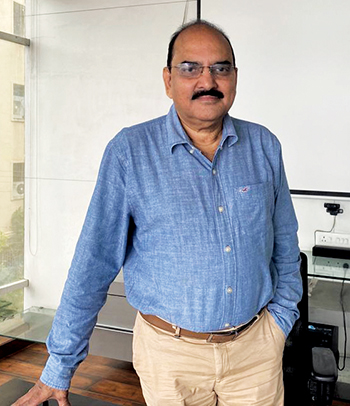‘Welcome move, but alternatives will cost three times more’
By Prantika Ghosh - September 27, 2022
Media4Growth reached out to leading OOH company Prakash Arts to get their take on the ban on flex by the AP government. H V Surendranath, COO of Prakash Arts, feels that while any environmentally friendly decision is welcome, there are also many cost challenges, in terms of using greener alternatives.
In the wake of the ban on plastic flex banners by the Andhra Pradesh government that was issued on October 23rd, many questions emerge for the OOH industry. To understand the implications of the decision on the OOH industry, Media4Growth spoke to leading media owning company Prakash Arts. H V Surendranath, Chief Operating Officer, Prakash Arts, said, "We welcome this decision, as we welcome anything that is environmentally friendly. Having said that, this will also be a big burden on all because the alternatives will cost three times more, compared to the regular materials. Finally, the cost has to be borne by the advertiser, so it is a huge burden on them.”
 Surendranath added, referring to the greener alternatives, "We are all set up for material procurement from different sources in the South and have already rolled out some campaigns in Andhra Pradesh with environmentally friendly materials earlier this year. But these alternatives are expensive.” He informed that Prakash Arts had recently rolled out a campaign for Bigboss (Telugu) using completely environmentally friendly materials.
Surendranath added, referring to the greener alternatives, "We are all set up for material procurement from different sources in the South and have already rolled out some campaigns in Andhra Pradesh with environmentally friendly materials earlier this year. But these alternatives are expensive.” He informed that Prakash Arts had recently rolled out a campaign for Bigboss (Telugu) using completely environmentally friendly materials.
Further explaining the hurdles that advertisers and media owners will face in switching from traditional flex to greener alternatives, Surendranath said, "PVC flex is available easily in the market, but the alternatives have some limitations in terms of the production process. So since the production level is not that high, we may have to plan in advance and also prepare for the higher payout, which is three times the regular flex cost. But we have strategically planned this so that we don’t have to shift the burden to the advertiser and have priced it affordably.” He added that they were focusing on volumes and also negotiating with the manufacturers.
Further, talking about client reaction to the flex ban, Surendranath said, "The retail segment in tier 2 and tier 3 cities might now do some cost-cutting by reducing the number of creative changes in a month in order to sustain the high printing costs. But I believe with time, clients will also realise the importance of contributing to the cause."

